If you follow me on Instagram, you’ll know that I love vintage-style fashion. Whilst I may not be able to do the hair or the makeup from the 40’s and 50’s (and am incredibly jealous of the people who do!), you’ll often see me whizzing around in my chair sporting a swing dress and lashings of red lipstick.
One question I get asked a lot is ‘what are your favourite brands for accessible fashion’, and honestly, it’s still something I’m learning about. That’s why I’m embarking on my ‘But Make It Accessible’ series.
I’ve yet to find many clothes that suit my personal style that I find easy to wear. I generally just end up buying clothes for aesthetic purposes: how they make me feel vs how they feel. This means that I often need help getting them on and off, and am pretty likely to end up hurting myself in some way if I don’t. And sometimes even then.
They say you should suffer for fashion but….
There are a number of reasons for this: zips in places I can’t reach, zips being too stiff even if they are reachable, buttons being too fiddly for my hands, not being able to reach the buttons, having to contort my body in weird ways to get the dress on or off (using an unnecessary amount of energy whilst doing it), fabrics being too rough for my sensitive skin, zips pressing into my skin, boning or seams digging in or rubbing, or certain parts of the dress sitting in ways that can make me pop.
When I first started writing this, I had yet to find a single dress that I love that I could just get in and out of myself. So, I wondered whether I could create a dress that I loved, that was also accessible for me. I reached out to the lovely and talented designer Amy Winwood to collaborate on designing a dress that met all my criteria. And in today’s post, I’m going to walk you through the process of how we did that.
One thing that I think is important to note from the beginning is that this dress was made to be accessible for *me*. Everyone has different needs when it comes to fashion, and we focussed on designing this in a way that would be the most comfortable for my body and my needs.
THE DESIGN
My dream dress has always been the black and white gown that Grace Kelly wore in Rear Window, and I knew from the outset that I wanted the dress to take inspiration from that – but obviously way simpler and appropriate to wear in the day.
Using the Rear Window dress for inspiration, we first discussed ideas for the general design and structure of the dress. Personally, the easiest thing for me to do when getting dressed is just stepping into a dress (but often the issue is then doing it up), so we threw around some ideas about how to do this. The most simple thing would be to create a dress that I could just entirely step into, and so the waistband and the top of the dress needed to take that into consideration.
Amy told me that she had some experience designing for wheelchair users when she was at University:
“At uni we were given the project title ‘make a change’ which there was no limits on what we could do as long as our project made a change. I chose to work on accessible design. For this I went to charity shops and bought a range of clothing which I experimented with on a mannequin. I found some magnetic closures which I added to my designs to make them less fiddly.”
I thought it would be cool to see if there was a way of using magnets or other fastenings on the top, just to see what the capability was in terms of making it accessible for other people. But I was concerned about weight and irritation, and ultimately, I don’t think it would be necessary for me, so we pretty quickly nixed that idea.
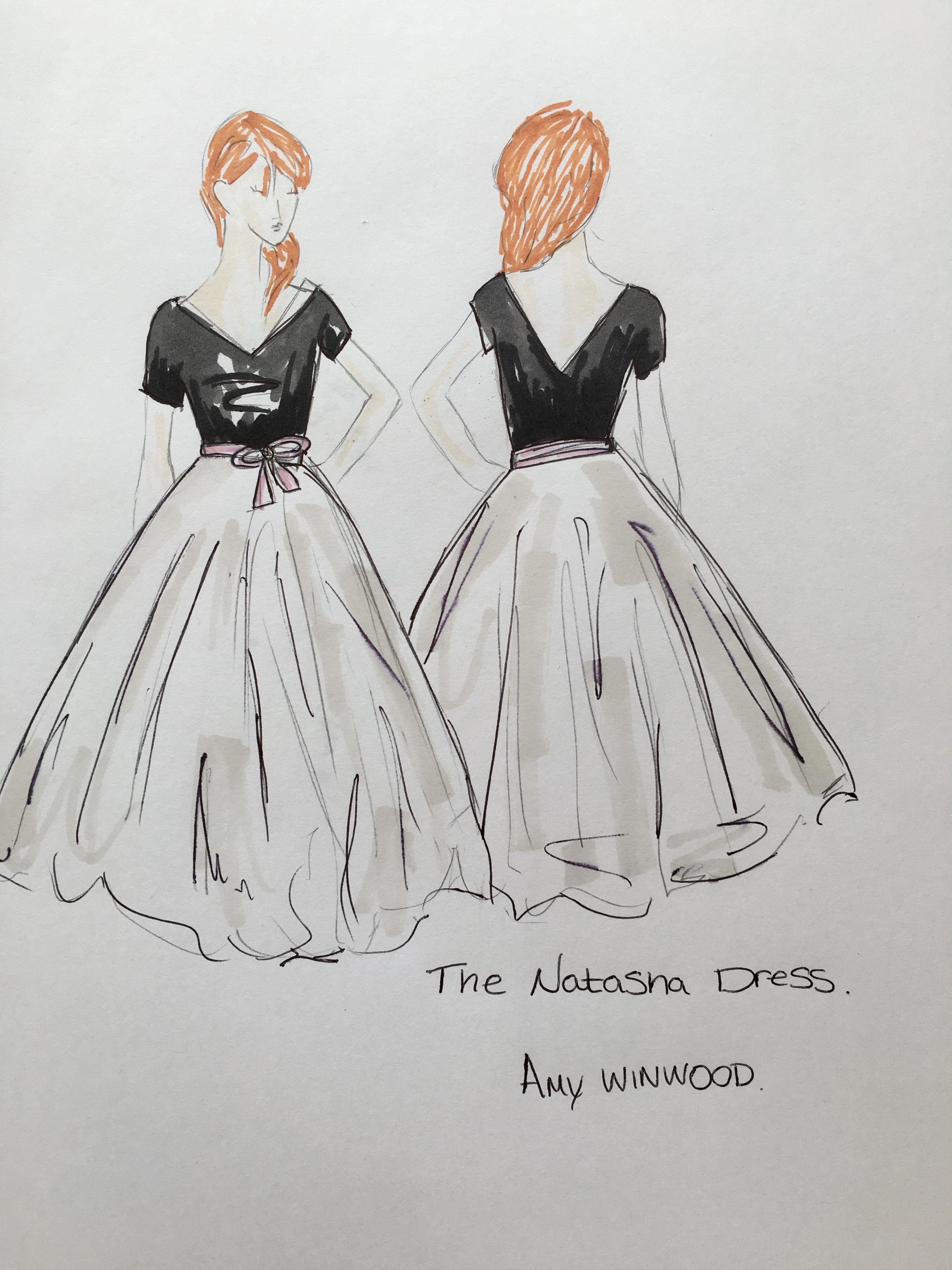
One other thing I often struggle with is belts, so we decided to create a ready tied bow belt that fastens with a magnet, so it’ll give a lovely illusion, but I won’t have to navigate something a bit fiddly, and being fabric, it won’t dig into my ribs.
After our initial chat, Amy then sent me over a design, and that’s when I started to get really excited.
From this image, Amy then suggested perhaps making the top have a bit more stretch, in order to make it even easier to get on and off. This would be achieved by making it in two sections that cross over each other, and therefore can be pulled down much more than if it was just one piece of fabric. We also added some ruffles to give it a bit more personality.
I asked Amy if her design process for this dress was any different from how she usually goes about things, and she said that it really wasn’t.
“Not really, as I actually used patterns that I had already created for other dresses that I had on my website. The only thing I changed was using a jersey fabric instead of a woven one. This gave us the stretch we needed to make it into a dress that can be pulled up.”
FABRICS
Because I have very sensitive skin, I like to make sure my clothes are as soft and non-irritating as possible. And because this dress needed to be something I could step into and just pull up, we had to make sure that the fabric had a good stretch to it.
We have gone for a black, soft stretch jersey fabric for the top and an off-white tulle for the skirt, that is lined with a soft white jersey fabric for skirt.
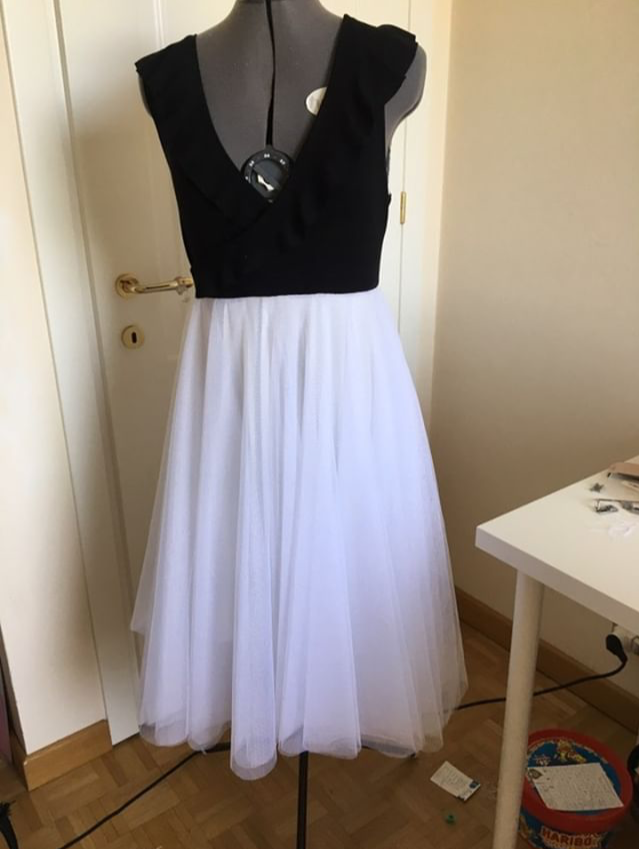
We ended up not going for the belt as we weren’t happy with how it looked on the dress in the end.
My experience with the dress
From the pictures that Amy was sending on Instagram, I really couldn’t wait for the dress to arrive from Italy, where Amy lives, and when it arrived, I actually squealed with happiness.
It was such a big deal to literally be able to step into a dress and pull it up and not have to contort my body, and once it’s on it’s so incredibly comfortable and doesn’t dig in at all.
In fact, I liked it so much, I had it made in a different colour, with a cap sleeve.
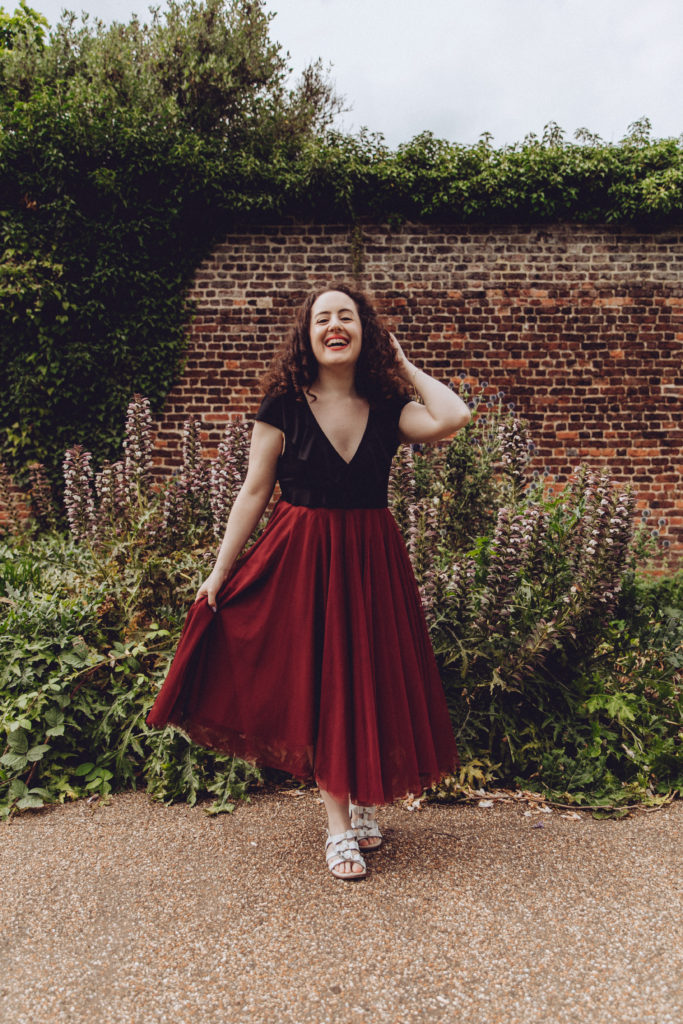
This is one of only two dresses I own that I can wear in the house without any problems comfort-wise. I do find that if I’m feeling extra sensitive and I’m not under my duvet and my arms go across the front of the tulle, it can feel a bit rough, but it’s something I can live with.
To conclude
I am absolutely delighted with how this dress turned out and if I could afford to I would buy one in every colour! One thing I love about Amy is that everything she sells is made to order – which means these kinds of details can be taken into consideration, and I know that I can get something which is going to suit me and my needs.
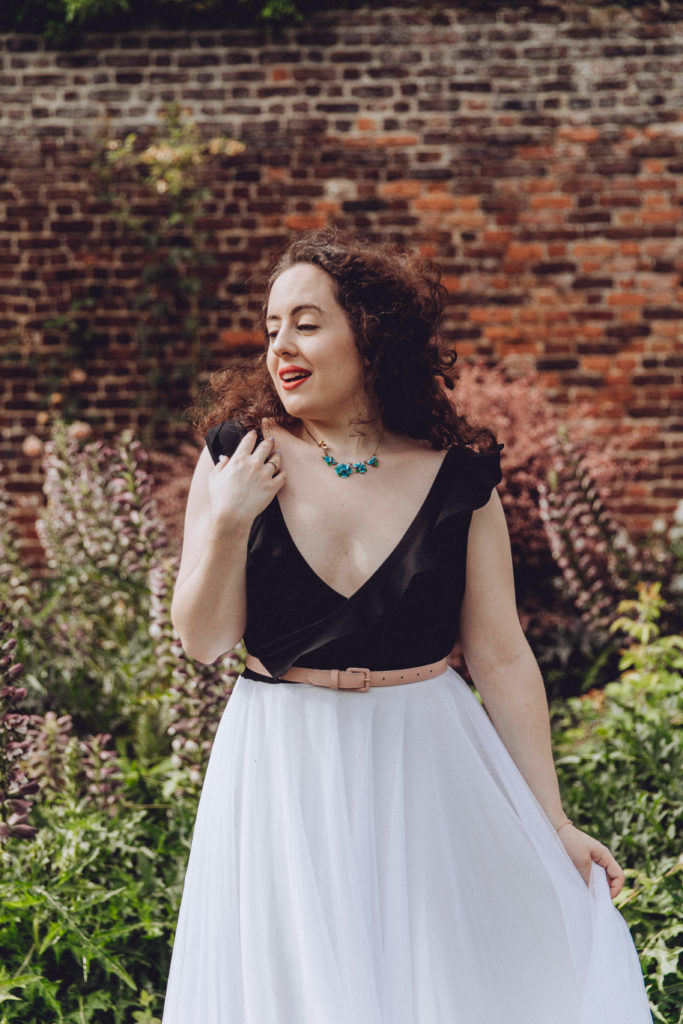
I know we were only making one kind of dress, and only for my specific accessibility requirements, but it made me realise how many similar dresses I own that are so much more difficult to wear. And it really is quite frustrating.
Once we were done designing the dress, I asked Amy how she found the process and if she thinks it’s inherently more difficult to create clothes with accessibility in mind. She told me:
I’m absolutely honoured that Amy has called this dress the ‘Natasha’, and if you’d like your very own, you can order one here. You can customise the tulle and bodice colour, and it will be made to measure. You can use the code NATASHA10 for 10% off!
Photography by Kaye Ford

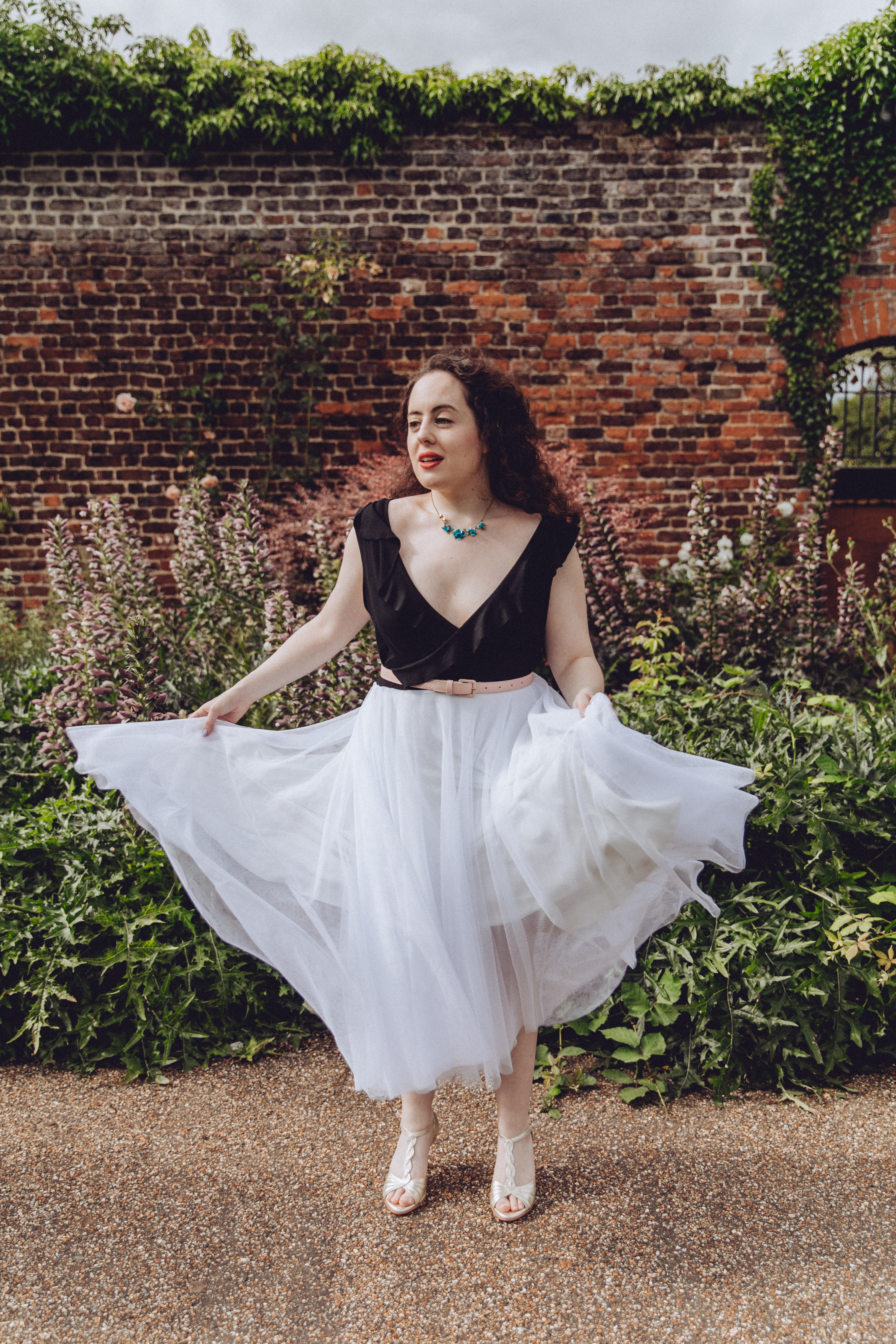
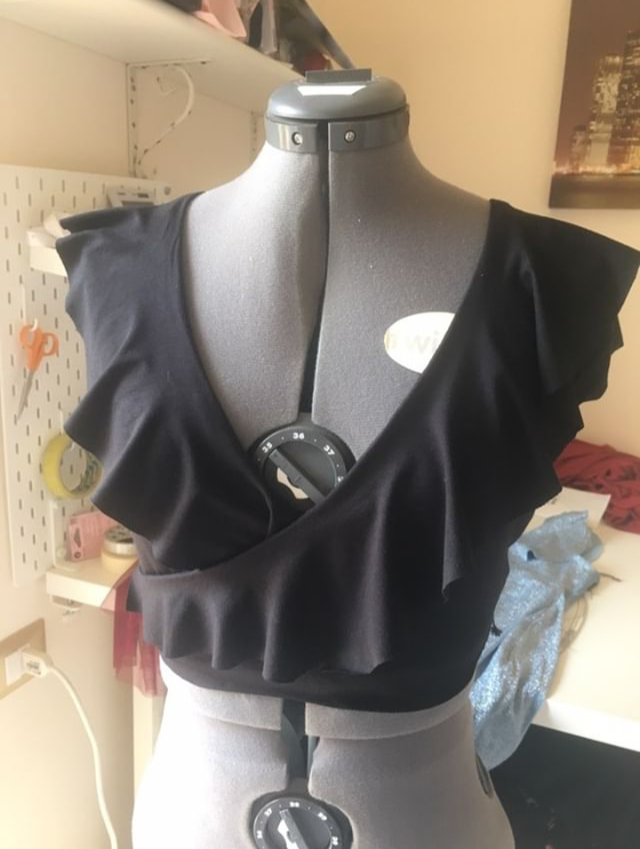
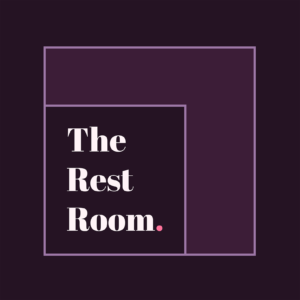
2 thoughts on “Designing My Dream Accessible Dress”
Natasha, I am glad that you found a designer that fits your needs and the dresses which she makes look very nice and comfortable on you.
Thank you, Silvia!